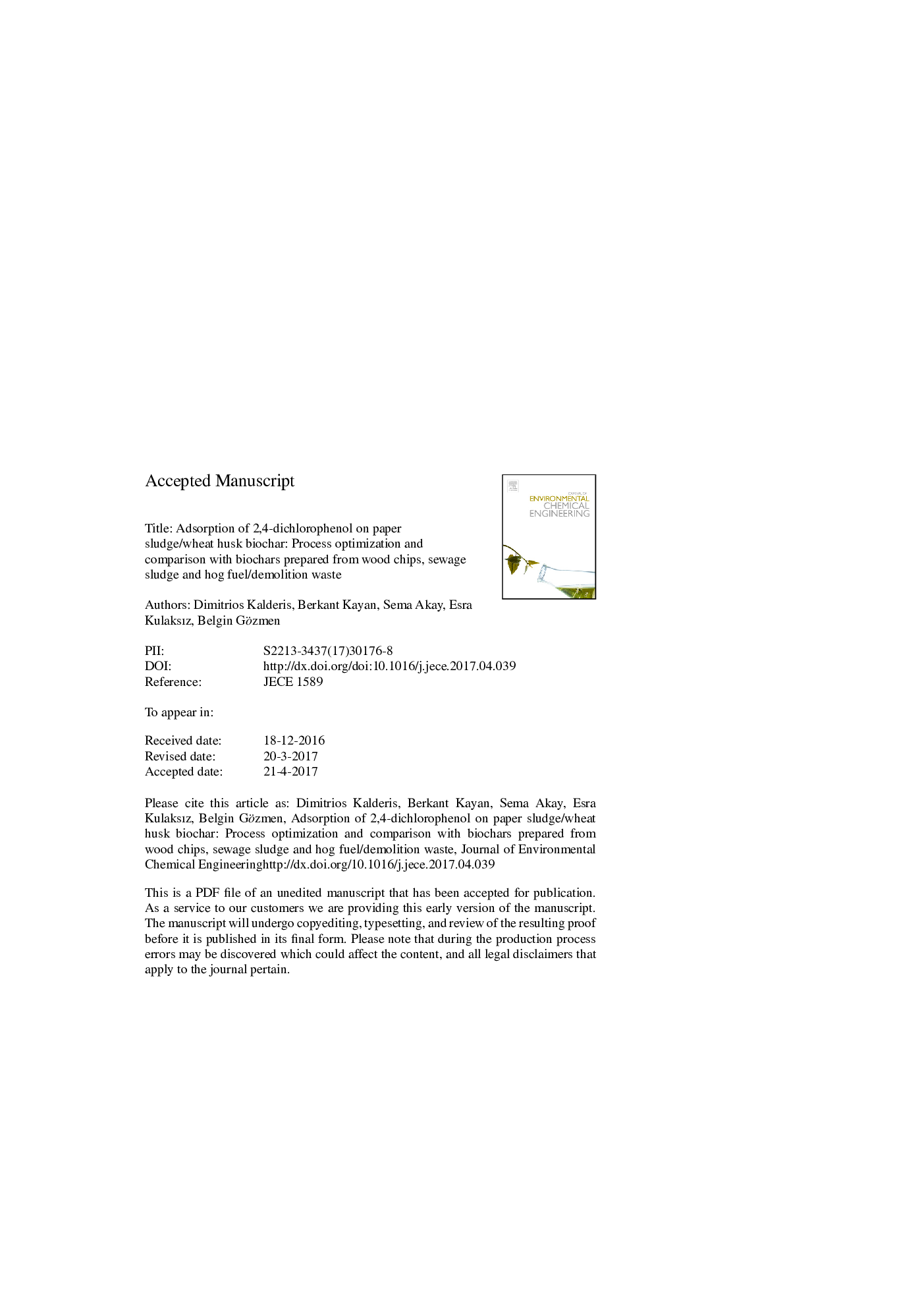| Article ID | Journal | Published Year | Pages | File Type |
|---|---|---|---|---|
| 4908369 | Journal of Environmental Chemical Engineering | 2017 | 33 Pages |
Abstract
The adsorption of 2,4-dichlorophenol, a toxic by-product of triclosan commonly found in wastewater treatment plant effluents, was studied on paper sludge/wheat husks biochar. By using response surface methodology, the optimum conditions and effects of pH, temperature, initial 2,4-DCP concentration and time were determined. The solution pH was found to be the most influential parameter whereas the optimum adsorption conditions were predicted as: C0 = 40.28 mg Lâ1, T = 326 K, pH = 2.8, t = 143 min, where a 99.95% adsorption could be achieved. Both Langmuir and Freundlich provided a good fit for the experimental data, indicating a surface and multi-layer adsorption. Kinetically, the process primarily followed the pseudo-second order model (chemisorption). By comparing the adsorption capacity at equilibrium of our main biochar (qe = 9.28 mg gâ1) to 3 biochars prepared from different biomasses (qe values 1.57-2.96 mg gâ1), it was concluded that pH-dependent electrostatic interactions and non-covalent Ï-electron donor-acceptor mechanisms play the most important role. Finally, there was indication that high concentrations of Ca and K may promote the adsorbate-adsorbent interactions and enhance adsorption.
Related Topics
Physical Sciences and Engineering
Chemical Engineering
Chemical Engineering (General)
Authors
Dimitrios Kalderis, Berkant Kayan, Sema Akay, Esra Kulaksız, Belgin Gözmen,
